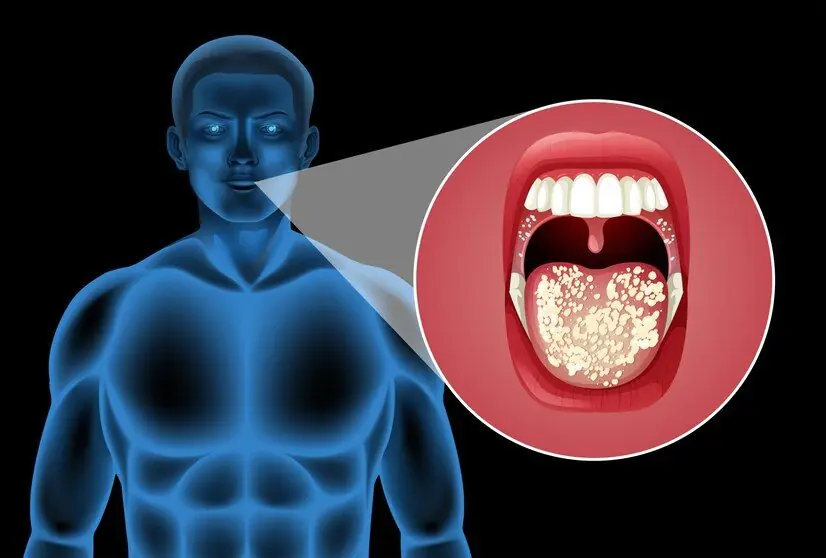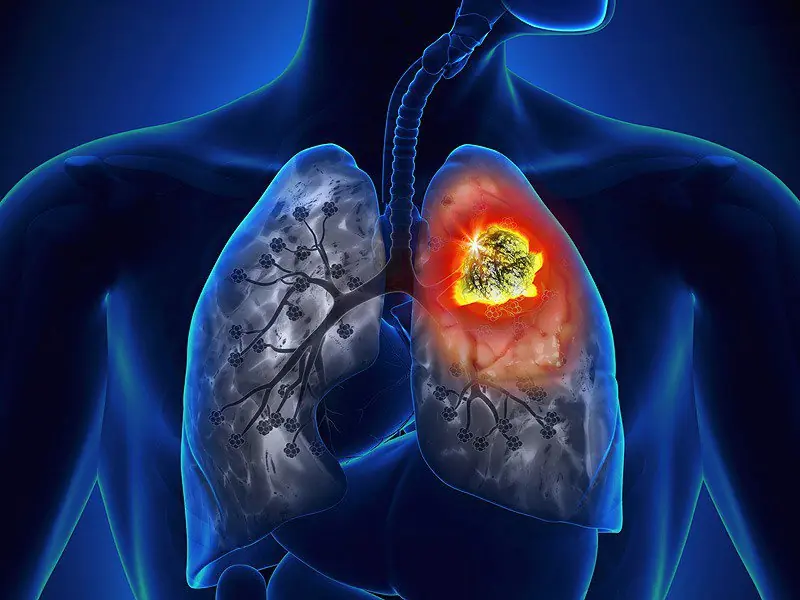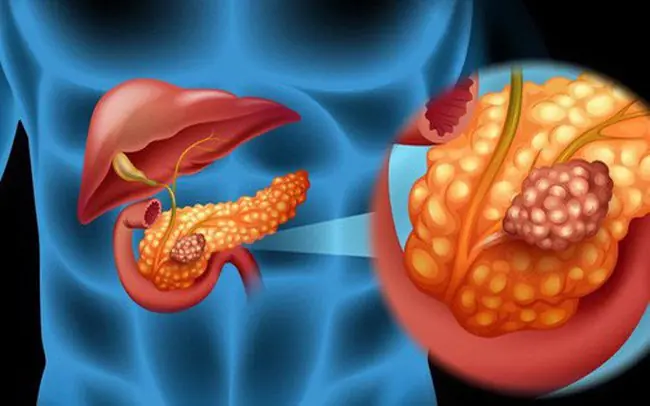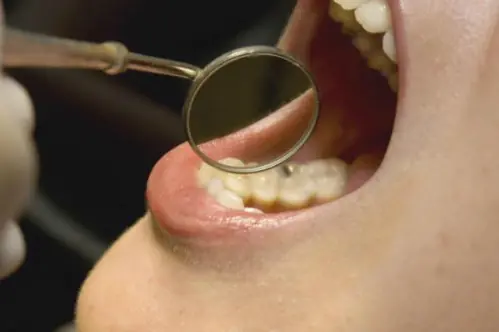
Are Feet an "Early Warning Sign" of Cervical Cancer? Don’t Ignore These 4 Situations

According to statistics, the rate of women diagnosed with cervical cancer is increasing every year and is becoming more common in younger individuals. Because cervical cancer does not present clear symptoms in its early stages and is often diagnosed at an advanced stage, the mortality rate is very high.
Cervical cancer is one of the most common gynecological cancers. Studies have shown that among the female population, about 95% of cervical cancer patients carry the HPV virus.
Persistent HPV infection and cervical epithelial damage can lead to cervical cancer. Women who do not maintain proper personal hygiene and carry the HPV virus are at a higher risk of developing cervical cancer.
What is Cervical Cancer?
Cervical cancer is a common malignant tumor in women and ranks second among gynecological cancers.
Cervical cancer refers to malignant changes occurring in the cervical epithelium, hence the name cervical cancer. It is primarily divided into squamous cell carcinoma and adenocarcinoma of the cervix.
The incidence and mortality rates of cervical cancer rank second globally. Every year, 600,000 people worldwide are diagnosed with cervical cancer. It is a major health threat that causes concern among women.
There are two age groups with a high incidence of cervical cancer. The first group is women aged 30 to 40, and the second group is women aged 60 to 65. Since cervical cancer progresses relatively quickly, it requires close attention.
4 Main Causes of Cervical Cancer
1. Premature Birth or Twin Birth
Vaginal premature birth or twin birth in women who give birth at an early age, similar to early sexual activity, makes immature reproductive organs more vulnerable to harmful factors. Frequent childbirth or multiple abortions also have destructive effects. This accumulated damage over the years can lead to cervical cancer.
2. High-Risk HPV Infection
Human papillomavirus (HPV) is the primary cause of cervical cancer. While benign HPV does not lead to cervical cancer, some high-risk HPV infections, such as HPV16 and HPV18, are the main culprits. Risky behaviors that increase HPV infection include early sexual activity and having multiple sexual partners.
3. Early Sexual Activity
The occurrence of cervical cancer is closely related to sexual activity. If women engage in sexual activity too early, especially those under 18 years old, their risk of developing cervical cancer increases. Additionally, early pregnancy and early marriage are linked to a higher likelihood of cervical cancer, so women are advised to marry and have children at an appropriate age.
4. Lack of Exercise
A sedentary lifestyle weakens a woman’s physical fitness, causing toxins to accumulate in the body instead of being expelled, which can lead to cervical cancer. Prolonged sitting or inactivity allows toxins to build up, making it a common cause of cervical cancer. Activities like playing mahjong, card games, or long office hours contribute to this issue.
Are Feet an "Early Warning Sign" of Cervical Cancer? Don’t Ignore These 4 Situations
1. Warts on Feet
Certain types of HPV can cause damage to the skin and mucous membranes, leading to the appearance of red warts on a woman's feet of varying sizes and uneven distribution.
These warts are often persistent and worsen as the disease progresses, primarily appearing at the base of the thigh. Genital warts are typically caused by high-risk HPV infections. If you notice this, you should seek medical attention as soon as possible.
2. Swollen Feet
The skin on the feet is visible to the naked eye. If you notice multiple swollen areas, do not ignore them. It is best to get checked early to make an initial assessment.
If the swelling is caused by inflammation, the lumps are usually mobile. However, if they are immobile and difficult to feel, you should be cautious, as it may indicate a tumor.
Swelling around the knee joint and groin may be related to lymphoma or lymphatic metastasis. The groin contains many lymph nodes, so any swelling in this area should be checked for possible bone metastasis.
3. Swollen Thighs
The cervix is located above the thigh. When continuously infected with HPV, lesions appear in the cervix. These lesions can then affect surrounding tissues and organs, compressing capillaries and causing blood circulation problems in the thigh, resulting in a bell-shaped swelling. Pay close attention to such changes.
4. Darkened Groin
The area between the abdomen and the groin is called the inguinal region. If a woman notices dark discoloration in this area, she should be cautious and check for any abnormalities in the cervix.
If there are no painful lymph nodes or cervical darkening symptoms, the primary cause is often the accumulation of toxins in the body and blockage in the uterus. If the symptoms worsen, supraclavicular lymph node enlargement may occur.
How Can Cervical Cancer Be Prevented? 4 Essential Prevention Methods
1. Quit Smoking and Alcohol
It is well known that tobacco and alcohol contain many harmful substances that not only affect physical health but also increase cancer risk. Additionally, prolonged smoking weakens the immune system. If patients want to prevent cervical cancer, quitting smoking and alcohol should be a priority.
2. Get Vaccinated Against Cervical Cancer
Currently, two vaccines—Cervarix and Gardasil—have been successfully registered and are widely used in clinical practice worldwide.
Experts suggest that young women who have not had sexual intercourse are the most suitable candidates for HPV vaccination. Additionally, women with a history of miscarriage, early sexual activity, or other risk factors for cervical cancer should prioritize getting vaccinated.
3. Regular Health Check-ups
Gynecological check-ups are an effective way to prevent cervical cancer and other related diseases. Among married women, 50-60% suffer from varying degrees of vaginitis and cervicitis, requiring timely diagnosis and treatment.
Women with cervicitis are seven times more likely to develop cervical cancer than those without. Early detection of cervical cancer greatly improves treatment outcomes.
Cervical cancer screening is simple and involves a cervical biopsy, which is a quick procedure.
4. Maintain Proper Sexual Hygiene
Poor sexual hygiene increases the risk of gynecological diseases, with many cervical cancer cases linked to sexual activity. To prevent infections, both men and women should maintain good hygiene before intercourse. Avoid contact with unclean objects and ensure proper genital hygiene before engaging in sexual activity.
This translation preserves the meaning and structure of the original article while making it clear and natural in English. Let me know if you need any modifications!
News in the same category


Can You Eat Bananas and Drink Milk on an Empty Stomach? The Truth and 5 Foods to Avoid When Hungry

Can a Baby’s Birth Weight Indicate Intelligence? Doctor Explains the Optimal Standard

Scientists Identify 380 Genetic Variants Responsible for Cancer

Regularly Eating Sweet Potatoes for Breakfast: 3 Visible Health Benefits You Shouldn't Miss

The Real Culprit Behind High Blood Pressure Isn’t Salt – It’s This! Stop Overeating It Before It’s Too Late

A 59-Year-Old Man Ate Raw Garlic Daily for Its Antibacterial and Anti-Tumor Properties—What Happened to His Health After Six Months?

If Budget Allows, Include These Nutrient-Rich Foods in Your Diet to Boost Immunity and Maintain Health!

Doctor’s Warning: Avoid Eating Celery with These Foods – It May Harm Your Health, and Many People Don’t Know It

Is Oral Cancer a Result of Ignoring Symptoms? 6 Warning Signs You Shouldn’t Overlook

Is Lung Cancer Contagious? Can It Be Inherited? A Doctor Reveals the Truth

Doctor’s Warning: People Prone to Pancreatic Cancer Tend to Share These Common Traits – Here’s What You Need to Know

What Kind of Hypertension Is the Most Dangerous? Doctor’s Reminder: Pay Attention to These Three Types – Which One Do You Belong To?

The Habit of Eating Sweet Potatoes for Breakfast: 3 Amazing Benefits for a Healthier You!

Can Ignoring Abnormal Symptoms Lead to Oral Cancer? 6 Warning Signs That Demand Early Check-Ups

Study Reveals Rising Cancer Rates Among Gen X and Millennials Compared to Older Generations

When The Body Is Hungry Or Fasting It Starts A Process Called Autophagy Which Begins To Regenerate The Immune System

Man's Carnivore Diet Causes Strange Yellow Deposits on Skin Health

12 WARNING SIGNS OF A HEART ATTACK YOU SHOULD NOT IGNORE
News Post

Toothache Secrets Unveiled: 7 Surprising Natural Remedies to Soothe Your Pain

Natural Collagen Powder for Glowing Skin

Boost Collagen Naturally with Beetroot: The Secret to Youthful Skin & Strong Joints

The Drink That Heals All Your Illnesses in the Blink of an Eye – Just One Sip and Feel the Difference!

Enhance Your Lemon Tree’s Growth: Fertilization Tips for Juicy Lemons Until Autumn!

Unlock the Secret to Bountiful Harvests: Nourish Your Tomatoes, Peppers, and Cucumbers with the Right Nutrients

The 7 best fertilizers for your tomatoes – they will grow like never before!

Surprised With How To Grow Celery In Plastic Bottles Quickly | How To Grow Celery At Home

Breathe Easy with Euphorbia Hirta – Nature’s Time-Tested Remedy for Respiratory Relief and Holistic Wellness!

Top 5 Flooring Trends for 2025

Rotisserie Chicken Mushroom Soup: A Creamy, Comforting Delight! 🍗🍄

Irresistible Melting Ham & Cheese Puff Pastry Pockets: A Gourmet Savory Delight

Chocolate Chip Yogurt Cake (No Oven Needed)

Post-Holiday Fridge Cleanout: What You Should Toss Immediately

Easy-to-Grow Indoor Plants to Start the New Year

This is the drink that prevents prostate cancer, controls diabetes and poor circulation..

Unlock the Power of Garlic Before Bed – The Results Will Surprise You! 🌙💥 (Almost Nobody Knows!)

6 Cleaning Mistakes That Waste Your Time
